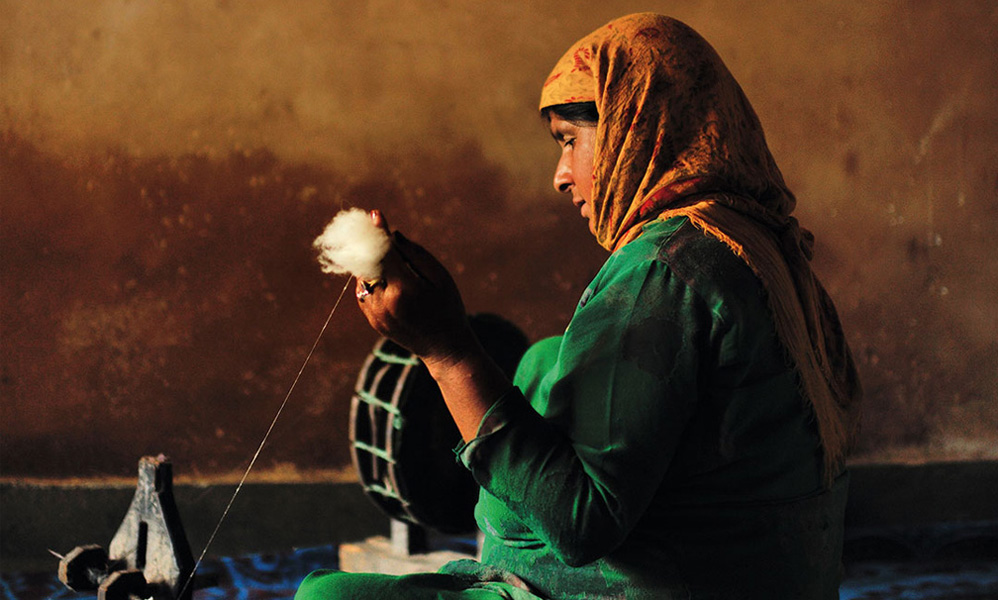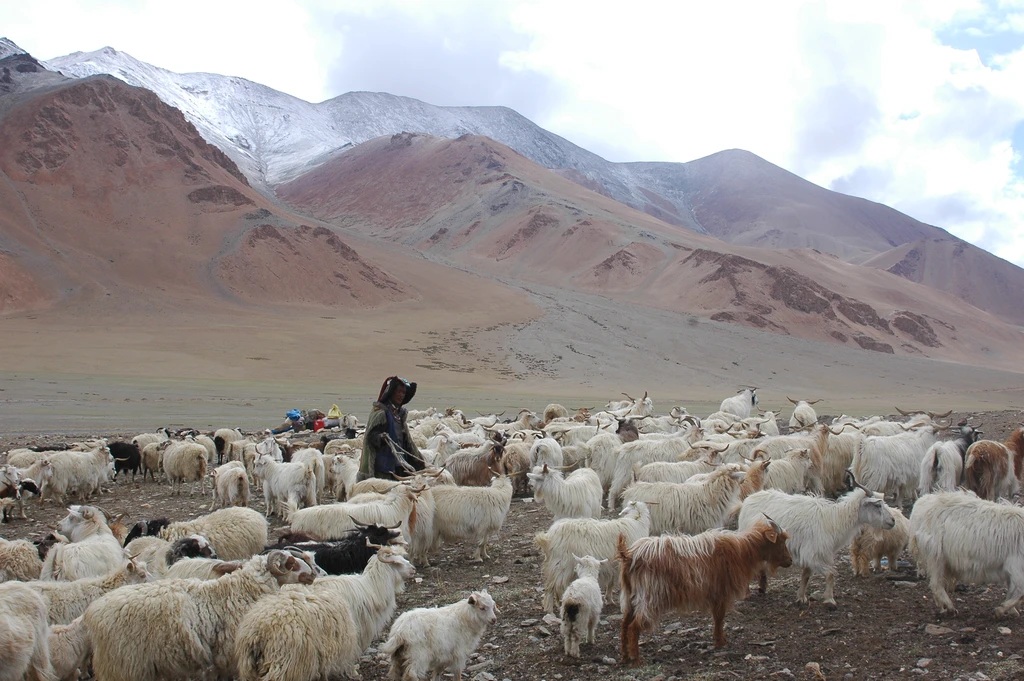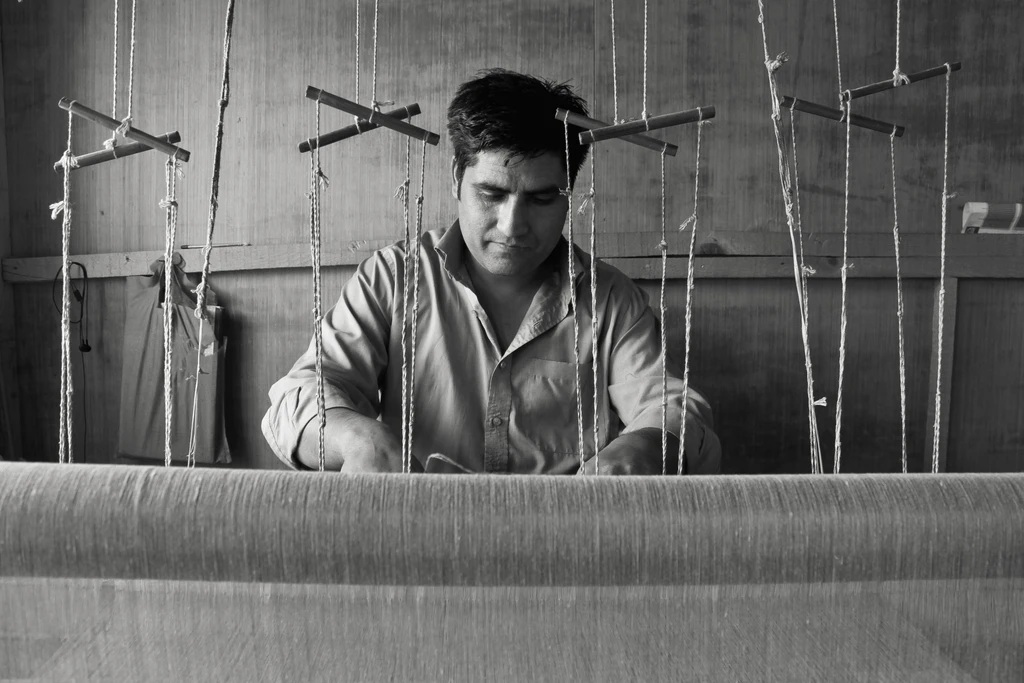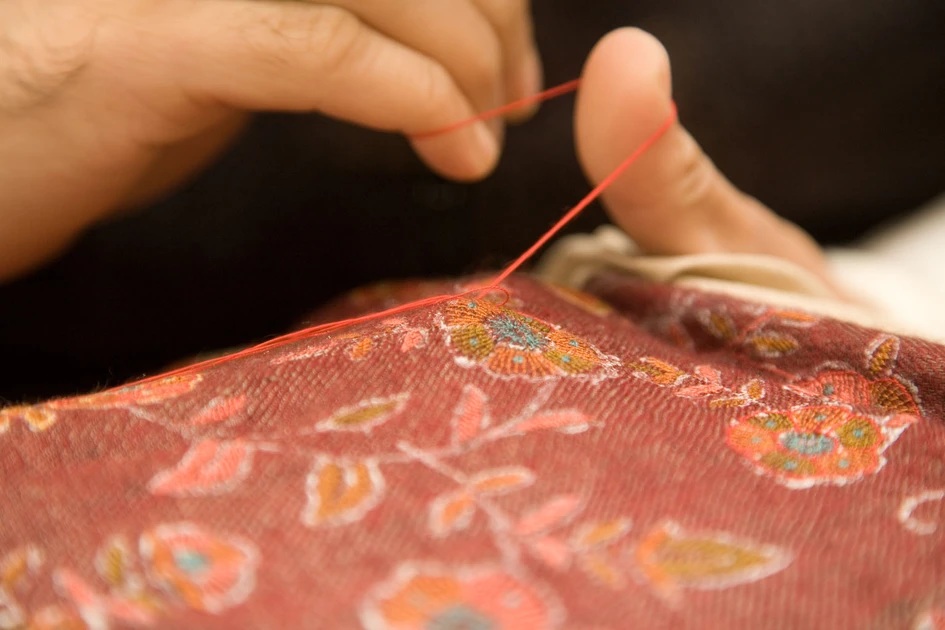
Craving for life-support for decades now, Kashmir’s six-century-old Pashmina industry supporting around seven lakh people is now facing existential crisis amid the Sino-India standoff at LAC.
By Jyotsna Bharti
A few years ago, when Amreen’s husband was killed in a shootout between armed forces and militants, she became the sole breadwinner of the family of five, including three children and one old mother.
What sustained the young widow during her tormenting time was her spinning wheel. She would turn the raw pashmina into fine threads used for weaving shawls.
Amreen’s industrious and back-breaking labour would ensure the two-time honourable meal for her children. But now, she’s finding it hard to put food on the table of her family.
Recurrent lockdowns in her trouble-torn homeland and the frontier faceoff at the faraway land fuelling her spinning wheel have ganged up to intrude her labour of love.
“There used to be a time in recent past when my room would be filled with yarns,” Amreen told Kashmir Observer in an anguished voice. “I had work and money to run my family. But now, I don’t know what to do, how to fulfill the necessities of my children.”
Like Amreen, thousands of Pashmina artisans—mainly widows—are suddenly marooned in the middle of the crisis and uncertainty in the valley. They’re either sitting idle without work or working as cleaners or maids in some plush Srinagar neighbourhoods for living. What has lately escalated their trouble is the ongoing Ladakh standoff.
“Whenever I visit my local Pashmina vendor these days, he tells me that the raw material won’t last long now,” Amreen said. “Looks like the tradition which we preserved for centuries is now going extinct.”
Cashmere Crisis
After some war-fronts reared their ugly heads nearby the winter pasturelands frequented by the Ladakhi nomads with their Pashmina goats, the valley known for producing branded Cashmere shawls suffered from yet another survival stress.
In case the dragon continues to occupy the significant Pashmina goat habitat in Ladakh, Kashmir’s battered business consortium is predicting one more stabbing collapse of the traditional crafts industry of the valley.

“We’re staring at the imminent fall of the traditional industry, if China won’t retreat from the winter grazing lands of Pashmina goats,” Sheikh Ashiq, president of Kashmir Chamber of Commerce and Industry (KCCI) told Kashmir Observer.
Pashmina shawls have been the brand of Kashmir since ages. The wool, Cashmere or Pashm, is sent down to valley from the high altitude plateaus of Ladakh as a raw material.
But as the two nations are currently locking horns over LAC nearby winter pasturelands of Pashmina goats, the prized and popular Cashmere wool is facing the existential crisis.
“We all are aware how Pashmina goats in Ladakh are already dying on a larger scale,” Ashiq continued. “Now, if this LAC dispute continues, then our workers, weavers, dyers, artists are going to face tremendous loss.”
From ending June every year, Kashmiri Pashmina traders start receiving consignment from Ladakhi nomads — who shear their goats to produce the valued raw Pashmina.
But this year, Ashiq said, it looks like the chain has already been affected.
“A huge chunk of Kashmiri women is part of Pashmina industry. They produce Pashmina threads, weave them into the finest fabric, and do embroidery on shawls,” Ashiq said.
“One can only imagine their plight if China continues to occupy the winter pasturelands of Pashmina goats.”
Massive Industry At Stake
Kashmir’s Pashmina industry is 600-year-old, which produces world-class shawls known for their grace, class, texture and warmth.
The industry of weaving yarns and manufacturing Pashmina shawls and scarfs is huge and caters to a massive market in the valley.

“As a major livelihood activity, there’re 6-7 lakhs people involved in the Pashmina industry,” said Showket Ahmed Mir, vice president, Genuine Kashmir Cottage handicraft production firm.
“This is their way of income, they’re dependent on this. People here are hit by the border disruption and pandemic together. For a long time, the raw material hasn’t come down from Ladakh. People are still managing with the old Pashmina stock.”
Majority of the Pashmina craftsmen, artisans and weavers belong to socio-economically backward classes.
“Most of the Pashmina artists are women, who support their family with their craft,” said Parvez Ahmad of Kashmir Artisan Rehabilitation Forum.
“The crisis in the industry is on our head. We haven’t got any new supply yet due to LAC faceoff. The entire chain is disturbed right now. Weavers, dyers, embroiders and designers will be badly hit. And these aren’t well off people. We’re already in a real bad shape and this is going to worsen our condition.”
Unending Nightmare
From manufacturing units to the weavers to the distributors, everyone related and engaged to the Pashmina industry is having a tough time today. While New Delhi’s “development” promise remains elusive, the Sino-India LAC showdown has only become another nightmare for the artisan community.

“Pashmina industry is slowly getting hit,” said Imtiyaz Hussain Mir, a Pashmina manufacturing unit owner. “Few of our units are already out of the stock. The raw materials have not been coming. Our families, workers, artists are dependent on us. For a large number of women in the rural area, Pashmina is the only source of income.”
If the standoff continues and China won’t retreat, 80 percent of the industry will collapse, Mir said.
“This LAC tension has a huge impact on us,” the Pashmina trader continued. “Already our economy is in shambles, and these tensions in the habitat of Pashmina goats are only going to eat away our ancestral self-sustaining line of work now.”
Follow this link to join our WhatsApp group: Join Now
Be Part of Quality Journalism |
Quality journalism takes a lot of time, money and hard work to produce and despite all the hardships we still do it. Our reporters and editors are working overtime in Kashmir and beyond to cover what you care about, break big stories, and expose injustices that can change lives. Today more people are reading Kashmir Observer than ever, but only a handful are paying while advertising revenues are falling fast. |
| ACT NOW |
| MONTHLY | Rs 100 | |
| YEARLY | Rs 1000 | |
| LIFETIME | Rs 10000 | |










